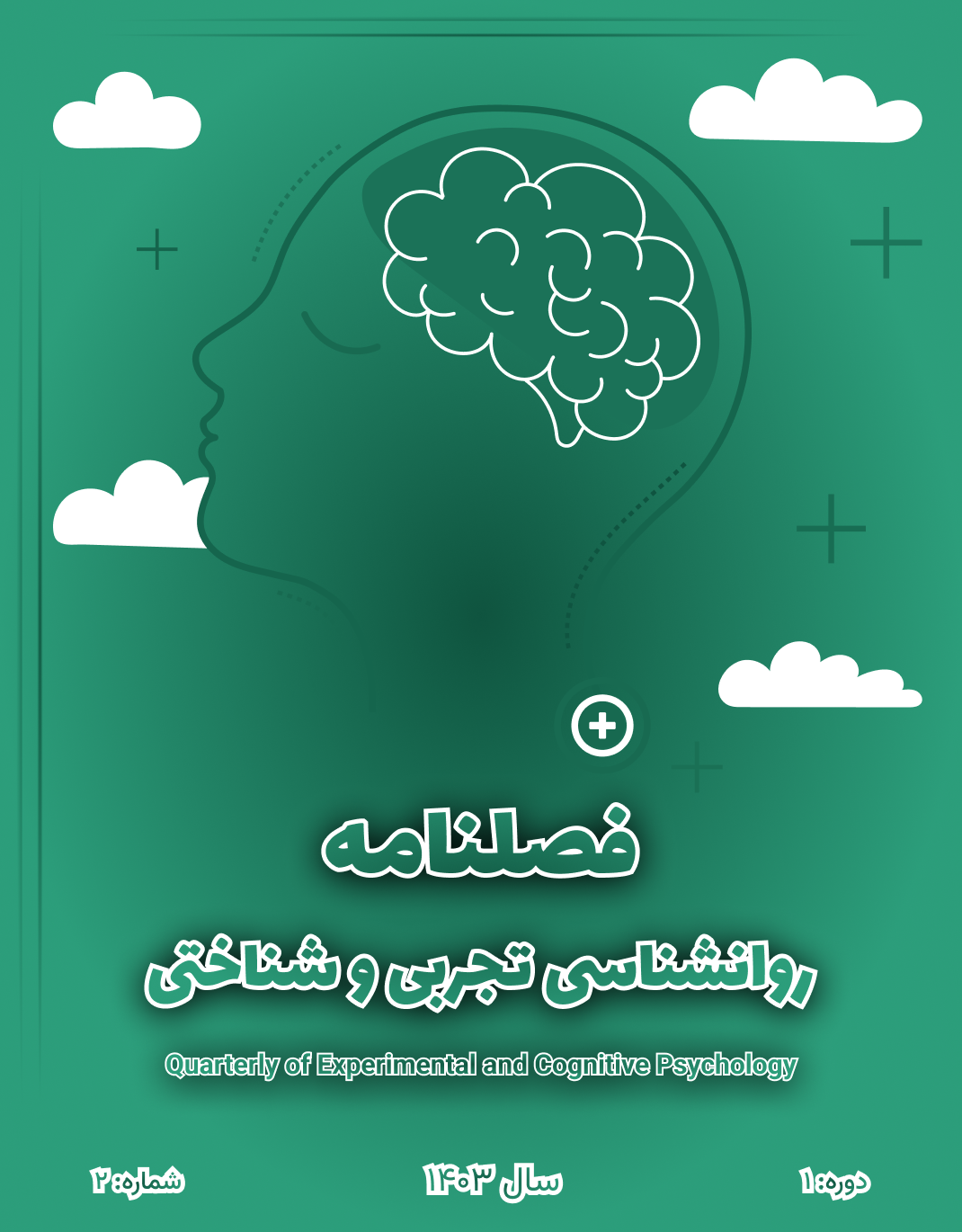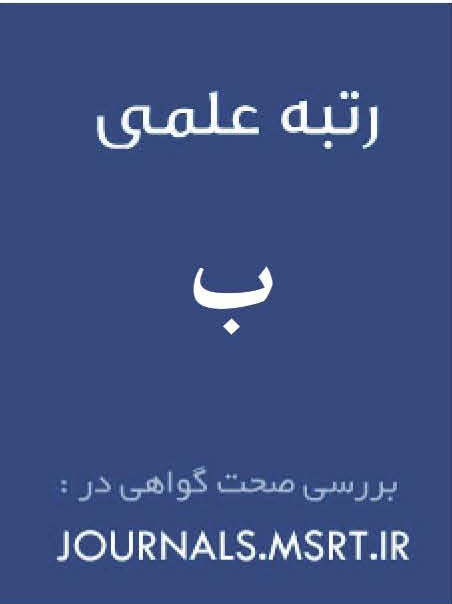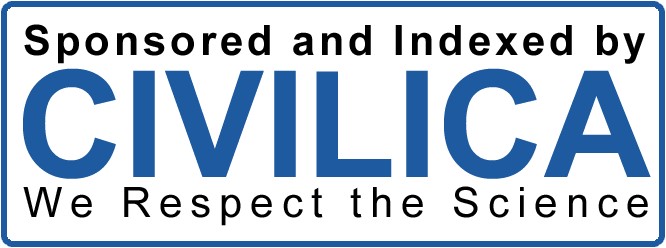Predicting Coping Self-Efficacy Based on Resilience and Perceived Control in Adolescents of Tehran
Keywords:
Coping self-efficacy, Resilience, Perceived control, AdolescentsAbstract
Objective: This study aimed to examine the predictive roles of resilience and perceived control in coping self-efficacy among adolescents in Tehran.
Methods and Materials: A descriptive-correlational study was conducted with 395 adolescents aged 15 to 18 in Tehran, selected through multistage cluster sampling. The data were collected using the Coping Self-Efficacy Scale (Chesney et al.), the Connor-Davidson Resilience Scale, and the Perceived Control Scale (White et al.). Data analysis included Pearson correlation and multiple linear regression using SPSS version 27.
Findings: Pearson correlation analysis revealed significant positive relationships between coping self-efficacy and both resilience (r = .62, p < .01) and perceived control (r = .58, p < .01). The multiple regression model indicated that these two predictors explained 47% of the variance in coping self-efficacy (R² = .47, F = 175.42, p < .001). Both predictors were statistically significant with positive standardized beta coefficients (resilience: β = .45; perceived control: β = .38).
Conclusion: The findings highlight the psychological significance of resilience and perceived control in enhancing adolescents’ coping self-efficacy, emphasizing their integration into psychological and educational intervention programs.
Downloads
References
Bhave, D. S. Y., Amin, D., Adsul, S., Bhalla, D. L., & Kariya, D. P. (2024). Study of Resilience in Female College Adolescents and Young Adults: Tough Times Don’t Last, Tough People Do. Ijcp, 34(8), 20-33. https://doi.org/10.59793/ijcp.v34i8.759
Brukhovetska, O. (2024). The Concept of Hardiness of a Teenages Under Current Martial Conditions in Ukraine. Spnma, 29(58), 62-79. https://doi.org/10.58442/3041-1858-2024-29(58)-62-79
Dändliker, L., Brünecke, I., Citterio, P., Lochmatter, F., Buchmann, M., & Grütter, J. (2022). Educational Concerns, Health Concerns and Mental Health During Early COVID-19 School Closures: The Role of Perceived Support by Teachers, Family, and Friends. Frontiers in psychology, 12. https://doi.org/10.3389/fpsyg.2021.733683
Darbani, S. A., & Parsakia, K. (2023). Investigating the effectiveness of strength-based counseling on adolescent resilience. Journal of Adolescent and Youth Psychological Studies (JAYPS), 4(5), 169-175. https://doi.org/10.61838/kman.jayps.4.5.16
Feng, L., Feng, J., Li, X., & An, Y. (2023). The Dyadic Effects of Social Support on Anxiety Among Family Members During COVID-19: The Mediating Role of Perceived Family Resilience. Development and Psychopathology, 36(3), 1099-1107. https://doi.org/10.1017/s0954579423000329
Fu, H., Wang, B., Xin, Y., Duh, S., & Deng, Y. (2021). Social Support and Well‐being of Adolescents in Worst‐stricken Areas 10 years After Wenchuan Earthquake: A Mediating Role of Resilience. PsyCh Journal, 11(1), 106-113. https://doi.org/10.1002/pchj.500
Janbozorgi, F., Darbani, S. A., & Parsakia, K. (2020). The structural model of predicting family health based on communication patterns and self-efficacy with the mediating role of self-compassion in women. Psychology of Woman Journal, 1(3), 66-80. http://psychowoman.ir/article-1-22-en.html
Kim, E. M., Lee, S., Ahn, H. Y., & Choi, H. S. (2022). Structural Equation Model on the Problem Behavior of Adolescents. International journal of environmental research and public health, 20(1), 756. https://doi.org/10.3390/ijerph20010756
Liao, C. C. L., & Dong-mei, W. (2023). Childhood Trauma and Adolescent Internalizing Problems: Examining the Mediating Role of Psychological Resilience and Moderating Role of Parental Emotional Socialization. Advances in Education Humanities and Social Science Research, 7(1), 48. https://doi.org/10.56028/aehssr.7.1.48.2023
Lin, S., Yuan, Z., Niu, G., Fan, C., & Hao, X. (2023). Family Matters More Than Friends on Problematic Social Media Use Among Adolescents: Mediating Roles of Resilience and Loneliness. International journal of mental health and addiction, 22(5), 2907-2925. https://doi.org/10.1007/s11469-023-01026-w
Luo, Y., Ma, T., & Deng, Y. (2023). School Climate and Adolescents’ Prosocial Behavior: The Mediating Role of Perceived Social Support and Resilience. Frontiers in psychology, 14. https://doi.org/10.3389/fpsyg.2023.1095566
Parsakia, K., Rostami, M., & Saadati, S. M. (2023). Validity and reliability of digital self-efficacy scale in Iranian sample. Journal of Adolescent and Youth Psychological Studies (JAYPS), 4(4), 152-158. https://journals.kmanpub.com/index.php/jayps/article/view/1151
Petrulytė, A., Guogienė, V., & Jakavičienė, A. (2024). Adolescents' Social Emotional Health, Stress Resilience and Perceived Parenting Styles. Advances in Social Sciences Research Journal, 11(4), 257-274. https://doi.org/10.14738/assrj.114.16889
Puspitaningrum, N. P. P., & Pudjiati, S. R. R. (2023). Sources of Social Support and Resilience Among Adolescents in Tangerang Regency. Jurnal Psikologi, 22(1), 15-22. https://doi.org/10.14710/jp.22.1.15-22
Putri, M. D., Setyowibowo, H., & Purba, F. D. (2022). Resiliensi Di LKSA: Perceived Social Support Dan Problem Focused Coping Pada Remaja. Psyche 165 Journal, 152-157. https://doi.org/10.35134/jpsy165.v15i4.206
Reyes-Wapano, M. R. (2022). A Path Analysis of the Relationships Among Parenting Styles, Emotional Intelligence and Resilience. International Journal of Research and Innovation in Social Science, 06(08), 07-13. https://doi.org/10.47772/ijriss.2022.6801
Saadati, N., & Parsakia, K. (2023). The Predictive Role of Parents' Marital Relationship Quality on The Adolescents' Psychological Capital. Journal of Adolescent and Youth Psychological Studies (JAYPS), 4(8), 139-146. https://doi.org/10.61838/kman.jayps.4.8.16
Sagone, E., Caroli, M. E. D., Falanga, R., & Indiana, M. L. (2020). Resilience and Perceived Self-Efficacy in Life Skills From Early to Late Adolescence. International Journal of Adolescence and Youth, 25(1), 882-890. https://doi.org/10.1080/02673843.2020.1771599
Sagone, E., & Indiana, M. L. (2023). What Is the Role of Coping in Resilience, Life Satisfaction and Self-Efficacy in Life Skills of Italian Adolescents? https://doi.org/10.35603/sws.iscss.2023/sv05.13
Saluja, P., Bohlouli, B., Hoglund, W. L. G., & Amin, M. (2025). Perceived Racial Discrimination, Resilience, and Oral Health Behaviours of Adolescents With Immigrant Backgrounds. PLoS One, 20(1), e0313393. https://doi.org/10.1371/journal.pone.0313393
Sedana, G. (2024). Psychological Rigidity, Perceived Parenting, and Problematic Internet Use in Adolescent Mental Health: A Review. Journal of Research in Vocational Education, 6(7), 22-27. https://doi.org/10.53469/jrve.2024.06(07).06
Shurtz, L., Bunt, S. C., Chowdhury, S. K., Didehbani, N., Stokes, M., Miller, S. M., Bell, K. R., & Cullum, C. M. (2023). A-57 Resilience and School/Social/Home Life Disruption During Recovery in Concussed Adolescents. Archives of Clinical Neuropsychology, 38(5), 859-859. https://doi.org/10.1093/arclin/acad042.57
Son, M. (2022). Identifying Trajectories of Ego-Resiliency in Adolescents: An Analysis of Data From the Korean Children and Youth Panel Survey 2010. Journal of Korean Academy of Fundamentals of Nursing, 29(2), 191-201. https://doi.org/10.7739/jkafn.2022.29.2.191
Wang, D., Chen, X., Scherffius, A., Yu, Z., Wang, X., Sun, M., & Fan, F. (2024). Perceived School Bullying and Psychotic-Like Experiences in Sexual Minority Adolescents: The Mediating and Moderating Roles of Resilience. Child and adolescent psychiatry and mental health, 18(1). https://doi.org/10.1186/s13034-024-00747-7
Wu, Y., Guo, Z., Zhang, D., Wang, Y., & Wang, S. (2024). Sleep Quality and Suicidal Ideation in Adolescent Depression: A Chain Mediation Effect of Perceived Social Support and Resilience. Clinical Psychology & Psychotherapy, 31(2). https://doi.org/10.1002/cpp.2990
Yildirim, O. O., & Çelikkol, A. K. (2024). Investigation of the Resilience, Self-Efficacy, and Perceived Social Support of Gifted Students. Ankara Üniversitesi Eğitim Bilimleri Fakültesi Özel Eğitim Dergisi, 25(2), 127-140. https://doi.org/10.21565/ozelegitimdergisi.1195044
Zheng, J., & Chen, B. B. (2025). Parent-Adolescent Discrepancies in Perceiving Parental Psychological Control and Autonomy Support Predict Adolescents’ Psychological Adjustment: Does Adolescent Gender Make a Difference? Journal of youth and adolescence. https://doi.org/10.1007/s10964-025-02144-5
Downloads
Published
Submitted
Revised
Accepted
Issue
Section
License
Copyright (c) 2024 Quarterly of Experimental and Cognitive Psychology

This work is licensed under a Creative Commons Attribution-NonCommercial 4.0 International License.






